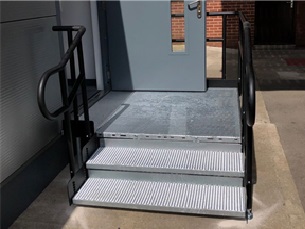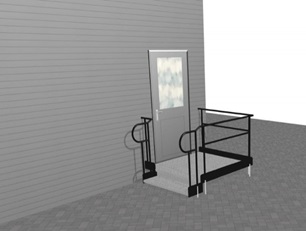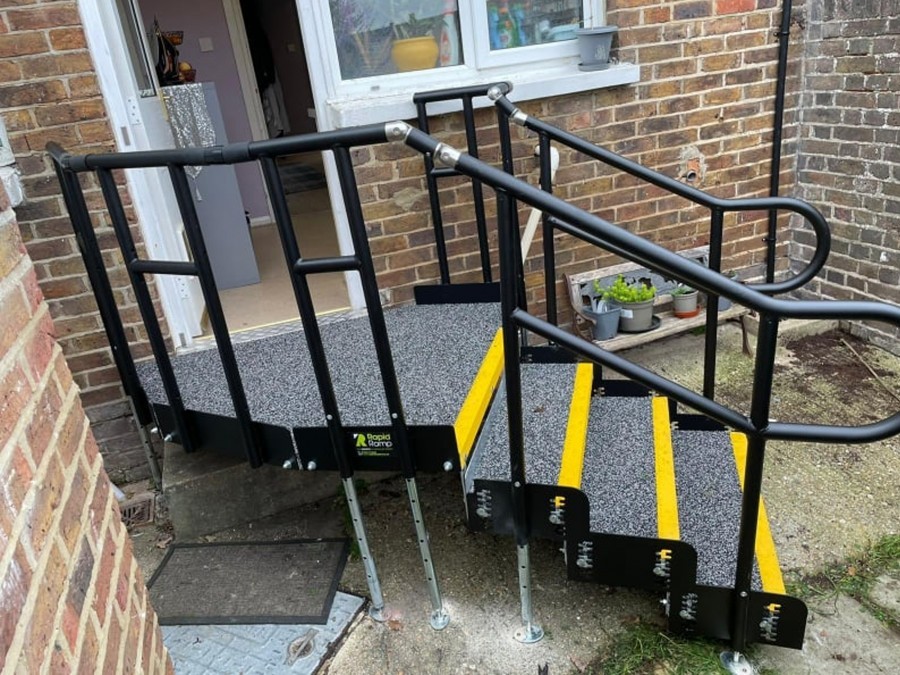
Published on Monday 13th December 2021
There are different materials that a front door step can be constructed from, including concrete, timber and steel. This article breaks down each material's advantages and disadvantages.
There are different materials that a front door step can be constructed from, including concrete, timber and steel. This article breaks down each material's advantages and disadvantages.
Concrete Steps.jpg)
Concrete can be used to create permanent steps to a front door. They require minimal maintenance and can be made to blend in with existing paths.
However, concrete installations are heavily reliant on good weather conditions and cannot be completed in snow or frozen temperatures, as setting time is required.
Concrete is also not porous and will allow water to build easily and puddle on the surface. Wet surfaces encourage moss growth and create slipping hazards for users.
If you’re looking for temporary steps, we would never advise concrete. It is a one-use system, meaning once it has served its purpose, the material is broken up and thrown away. This can be costly in labour and waste disposal.
.jpg) Wooden Steps
Wooden Steps
Wood can be aesthetically pleasing against a timber door, and a local craftsman should be able to create a set of steps. However, please be advised that wood is very prone to rotting, splintering, and cracking.
In wet weather conditions, wooden steps can become slippery, and moss or fungi quickly grows from water exposure.
If you require steps from a fire exit, wood is not adviseable. Wood will burn if exposed to fire; instead, choose a fire-resistant steel.
Steel Steps.jpg)
Steel steps can appear industrial. However, many of the benefits outweigh this disadvantage.
Unlike concrete, steel steps can be used immediately after installation and are suitable for permanent and temporary use.
Steel is also a fire-resistant material that will not typically burn and melt at temperatures encountered in building fires.
Our own modular step system is made from galvanised steel components. Galvanising is a process where a protective coating of zinc is applied to prevent rusting and moss growth.
The product is also slip-resistant due to its self-draining mesh holes that allow water to pass through rather than collect and puddle on the surface.
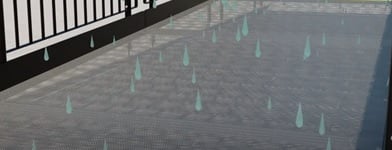
Steps come in different widths and can accommodate footfall travelling in two directions. A platform is included as standard with the Rapid Ramp Step System.
Widths available:
- 900mm – the recommended width for dwellings under Document M, Section 6 of the Building Regulations.
- 1000mm – our standard width for modular steps to dwellings.
- 1200mm – our slightly wider step platform.
- 1500mm – the recommended width for modular steps to public buildings.
Any of the above can be secured together to create almost any width.
Front Door Step Examples
QUICK QUOTE
Request a quick quote or email [email protected] with the full project address, drawings, photos and contact details.
Compliant and standard modular steps are both available.
THE UK’S EXPERTS IN MODULAR RAMP SYSTEMS.
Rapid Ramp
Riverside Works, Church Ln, Etchingham, TN19 7AS
Hours:
8am - 5pm, Monday to Friday

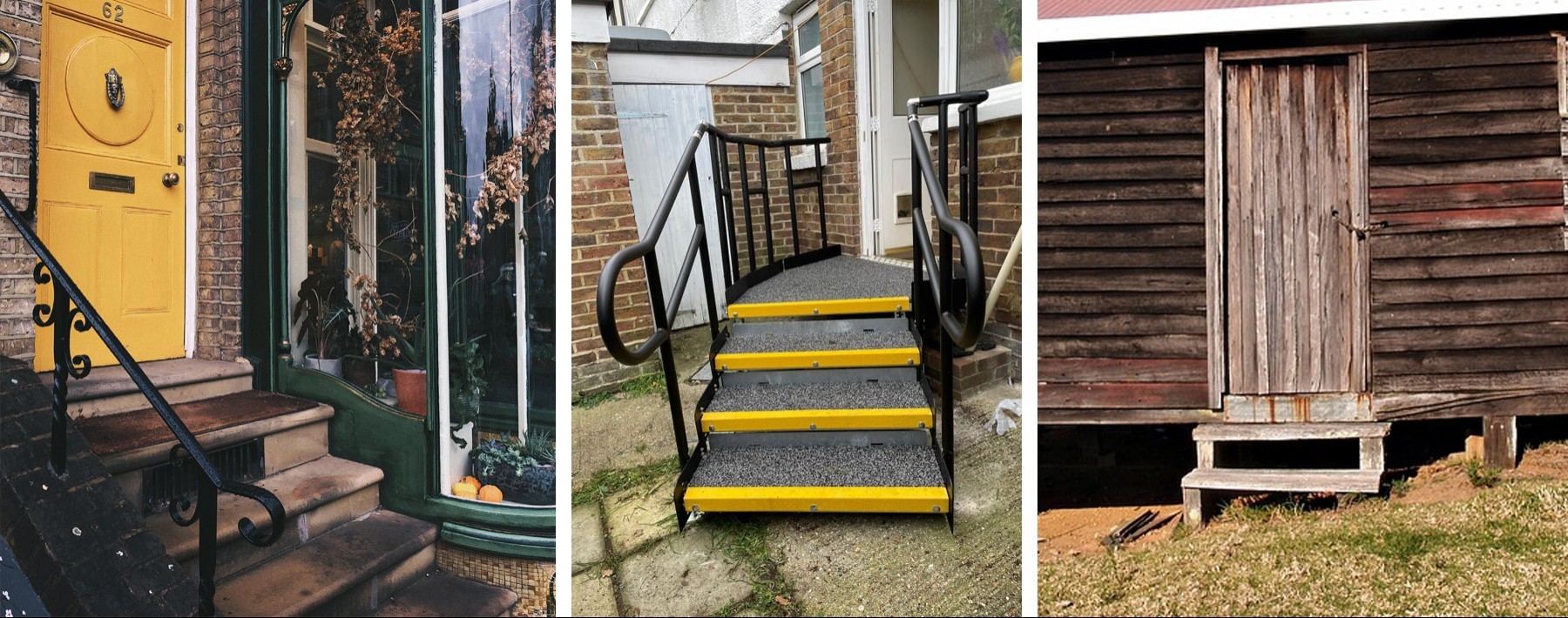
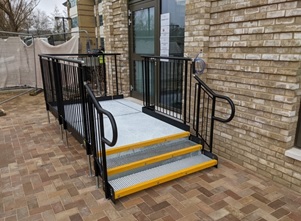
.jpg)
